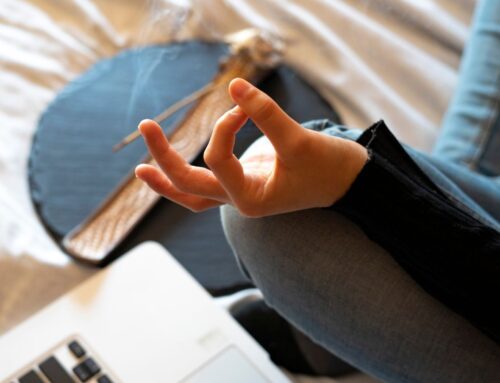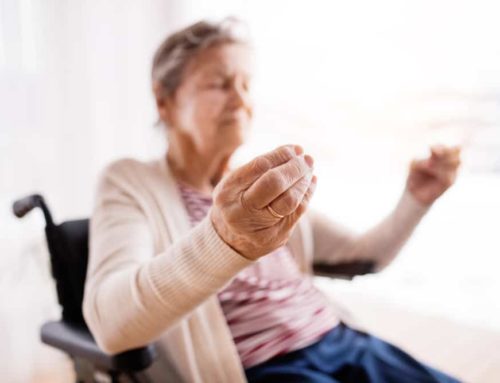When you think of yoga, the first things that might spring to mind are young, beautiful, fit, sexy people wearing fashionable workout gear and twisting their bodies gracefully in a lot of ways that the average person can’t imagine. You might look at it and think “I’m not that flexible; I’ll never be that flexible. I can’t do that.”
I have spastic cerebral palsy; I looked at the movements and range of motion that seemed to be required of yoga and I knew there was no way my body could achieve such things. When I was a teenager, I worked part-time at a day camp for children with acquired brain injuries and one day, they brought in a yoga instructor to do some physical activity with the kids. As I watched, I realized that it didn’t seem to matter what body type you had, or how flexible you were.
Yoga is slow, meditative and low impact; contrary to popular belief, it’s not about flexibility. Yoga is about the breath, and everyone breathes.
I approached the instructor after the session and expressed an interest in doing one-on-one sessions with her, though I had no idea how exactly it could work. Nor did she, having no experience in adaptive yoga. But we gave it a try anyhow. We learned from each other as we went along and we found ways to adapt exercises and movements to my physical ability.
Yoga calms me, relaxes me, centers me and connects me with the earth. I learnt ujjayi breathing – or ocean breathing – coming from the diaphragm. Breathing slowly in and out through the nose, a rushing sound is created as air passes through your relaxed throat. Length and speed of breath is controlled through the diaphragm, the strength of which improves over time.
All movement is connected to your breath. My yoga teacher often asked me to visualize strings of light attached to my limbs, expanding as I exhaled. Yoga is an amazing workout and it does improve flexibility and range of motion exponentially, but it shouldn’t be painful. You feel your limbs stretching and you channel any discomfort through your breath. There’s good pain and bad pain. The discomfort that comes with slowly pushing your body in new ways is good, but the instant you start to wince or the discomfort interferes with your breath, you stop.
Progress is also slow and gradual. Never in your life will you meet a yogi with a measurement tool handy, to painstakingly record every minimal degree of increase in flexibility. Many exercises are done with closed eyes.
In my case, my yogi would often gently hold my limbs in position of an adapted pose that suited my physical ability; she spoke in low, relaxing meditative tones and encouraged my visualization and relaxation as she slowly increased the positioning. Oftentimes, because my eyes were closed and the progress was so gradual, I was unaware of the level of flexibility I was able to achieve. I was never in any significant pain, so I never got the feeling of being pushed beyond my own limits. Real yoga doesn’t need to look perfect; it just needs to help you be in tune with your own body.
My yogi had a wonderful, joyous soft laugh –when I heard her start to giggle, I knew my body was doing something remarkable; I had to force myself sometimes, to not open my eyes because as soon as I saw what my body was doing, I’d tense and it would be lost. Laughter is not the enemy – at least not in the yoga I did. Laughter can help you relax even more and it will serve to open your body up even farther.
After every adaptive yoga session I felt lighter than air – for a little while – it was like all my spasticity had melted away. Of course, you feel the affects of the ways yoga pushes flexibility. You do feel sore, but it isn’t a negative, stressful or ‘painful’ soreness, or at least mine wasn’t. To me it signified my body adjusting, opening up, growing, pushing limits farther off.
Adaptive yoga helped my flexibility, it helped my sleep, it helped my mood. I was more content and relaxed. I felt more connected to the world around me. I learned more about my body through yoga than I did through a lifetime of conventional physiotherapy alone. Adaptive yoga allowed me to benefit from gradual and gentle increases in flexibility; my body never felt like it was being pushed beyond its limits.
My yogi wasn’t a physiotherapist, nor did she work with them. The physiotherapist I saw throughout my teens was surprised when I told her I did yoga. She wasn’t against it, but she wasn’t one for thinking too far outside of the box of traditional physiotherapy. I found this surprising, since yoga and physiotherapy are two different approaches to reaching a very similar end goal. Indeed, my yoga practice benefited my progress in physiotherapy; the latter was made easier by the former. As an adult, the physiotherapists I’ve seen have enthusiastically embraced -or at least been open to how blending practices of East and West can only serve to compliment each other. I often wonder how the benefits I experienced from both practices could have been enhanced if deliberate effort was made to have them work together in concert, as is so much more common now.
Yoga connects you to your body and teaches the art of channeling your energies. It connects your mind to your body and teaches that everything is interconnected. Everything works as one when you harness what is inside of you –your body can grow and stretch like a lotus flower blooming on a pond.
My yogi always ended our sessions with a simple but powerful statement, before we bowed to each other in mutual respect. Every so often I still whisper it out loud, in her memory, to thank her for helping me feel more comfortable in my own skin: “The light in me sees, acknowledges and bows to the light in you. Namaste.”
The opinions expressed in this article are those of the guest author and do not necessarily represent or reflect Propel Physiotherapy.


